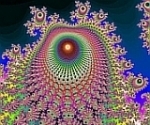Unfortunately, we have yet to initiate ASV in the laboratory. A review of several hundred cases in searching for candidates (and they've got to be
good candidates) yielded only 5 possibilities, and none of those wished to participate. Since then, two more outstanding candidates were uncovered, but they turned out to be non-compliers.
These numbers may reflect what's out there, tho. In the abstracts this year in SLEEP, Bijan Sadmoori, M.D., of Holy Family Hospital, Methuen, MA, showed an incidence of 1.6% for CSBD in a community hospital [0487]. And because of the nature of our patient base, we could be even lower than that.
Now don't get me wrong, I'm sure this technology will work quite well in a select group of patients. But the key word is "select." In the cross section of the Holy Family caseload, of the group of 30 patients, 12 were cardiac, 7 CNS, 5 CNS + cardiac and 8 medications (yeah, I know it don't add up right, there's probably some more overlap).
guest wrote:Always? {re: circulatory delay)
"There's always circulatory delay" might seem to be stretching it a bit (a leftover from the chemical responsiveness/circulatory delay exchange on TAS)(and if you look at the loop diagram it's effect is probably more like a catalyst vs a principal component)(but then how do you explain the improvement following pacemaker insertion in those cases?)(and also in this year's SLEEP abstracts [0536] Drs. Mendez, Kagramanov and Morgenthaler from Mayo Rochester showed an increase in circulatory time (CT) in CSBD compared to OSA patients)....well anyway, CT seems to be taking on more significance. The only thing that's holding us up is a standardized way to accurately reproduce results.
SAG








